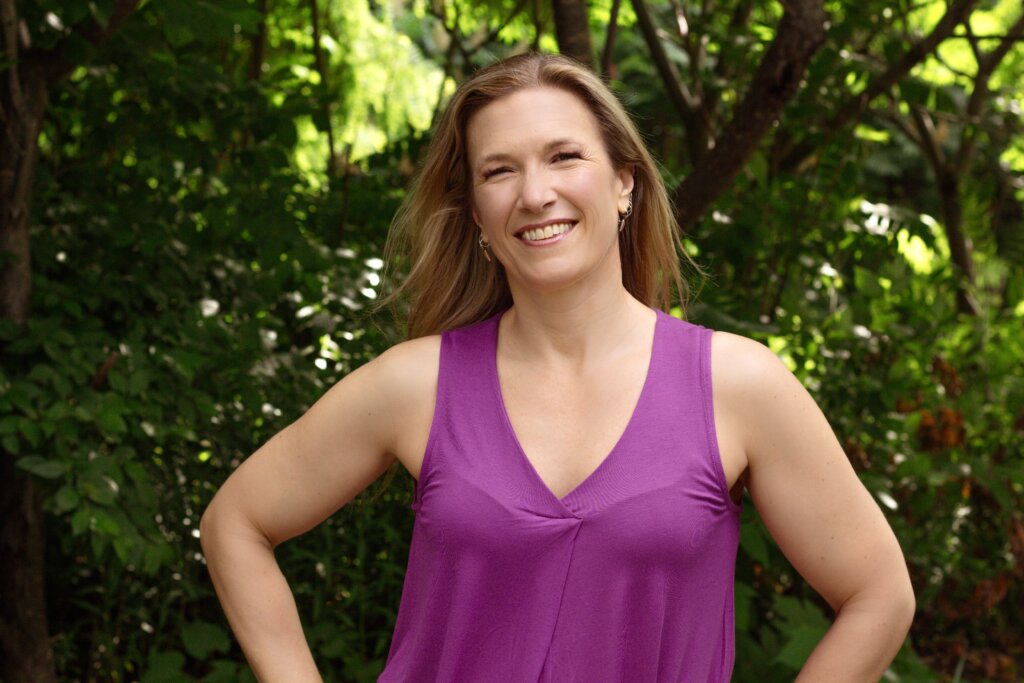How to become a digital nomad—and not go broke
Want to work abroad as a Canadian? Flexible work arrangements and digital nomad visas have made this easier than ever. Here’s how to make it happen.
Advertisement
Want to work abroad as a Canadian? Flexible work arrangements and digital nomad visas have made this easier than ever. Here’s how to make it happen.

A silver lining of the pandemic is that work has become more flexible than ever—leading more Canadians to take “workations” or relocate to other countries for weeks or months at a time. It’s more than just a change of scenery. Planned carefully, working abroad can mean seeing the world affordably.
If you’re intrigued by the idea of working very remotely, here’s what you need to know, with financial and lifestyle tips from those who have been doing it since the dawn of digital nomadism.
Nora Dunn, a content creator and former financial planner, is a long-time nomad. In 2006, she sold everything she owned—including her busy financial planning practice in Toronto—and went travelling. Burnt out from work, she realized she was unwilling to wait until retirement to pursue her lifelong dream of travel. What if, when the time finally came, she couldn’t for some reason? “It felt like a greater cost to me than the cost of selling everything I own,” says Dunn, who shares her adventures and travel tips on her blog, The Professional Hobo.
At the time, “digital nomad” wasn’t yet a term, and the lifestyle Dunn was pursuing felt as foreign as the places she would visit. Resources for long-term travellers, like online forums and meet-ups, were scarce, and few employers were open to having nomadic employees.
Of course, the pandemic has changed that. What started as work-from-home has become work-from-anywhere. Some Canadian employers are even encouraging their staff to explore the world. For example, communications firm Media Profile offers a “Work Away” benefit that covers up to $3,000 of employees’ travel expenses.
Countries, too, are getting on board. Until recently, digital nomads operated in a grey area—ineligible for work visas, they maxed out their stays on tourist visas. As a solution, countries like Greece, Portugal, Croatia, Iceland and the Bahamas have introduced digital nomad visas or permits, many of them launched since the pandemic, to allow foreign remote workers to stay up to one year. (And if you’re thinking about working as a digital nomad in Canada, on June 27 our federal government announced a new six-month digital nomad visa for foreign tech/STEM workers, at the 2023 Collision Conference in Toronto.)
Not all nomads sell off their possessions and quit their careers, as Dunn did, but it’s become increasingly common to see your co-workers join a Zoom meeting from another province or another country.
While there are no exact figures, some estimates say there are 35 million digital nomads worldwide, with Americans making up the majority. A 2022 study by MBO Partners reports that 16.9 million American workers describe themselves as digital nomads—131% more than in 2019, before the pandemic.
But Canadians are setting up their home offices away from home, too—according to Statista, Canadians make up 4% of the digital nomad population, ranking fourth behind the U.S., U.K. and Russia.
I’m one of them. I maintain a home base in Toronto, but I’m only there for about half the year. The other half, I’m in places like Thailand, Greece and Italy. I’m writing this article in Glasgow, Scotland, where I spend weekdays at a Spaces co-work office and go sightseeing on weekends.
It’s a lifestyle that has enabled me to see the world and experience other cultures at a much slower pace and in a more immersive way than if I were limited to annual vacation days. I keep expenses low by staying in each place longer—usually four weeks to three months—since many rentals give discounted rates for long-term stays and I can grocery shop and cook rather than eat out all the time. Moving around strategically is another tactic. I visit destinations during their low season and often choose out-of-the-way towns and local neighbourhoods that are less susceptible to tourism inflation.
“Hotspots for digital nomads include Thailand, Vietnam, Colombia, Panama, Mexico and Georgia (the country),” says Andrew Hallam, a personal finance journalist, speaker and author—his most recent book is Balance: How to Invest and Spend for Happiness, Health, and Wealth (Page Two, 2022). “Even on incomes that would be considered low in Canada, digital nomads can spend time in lower-cost countries, living well and saving money.” (It’s why many Canadians retire abroad.)
Hallam has been a digital nomad for nine years, spending a few months in different countries while maintaining official residency in Panama. He’s seen the number of digital nomads grow steadily and has met financial planners, lawyers, online teachers, marketers, web designers, software developers and more, all making their living on-the-move.
Social media can make it look like digital nomadism means working beachside. But the lifestyle isn’t all rainbows and coconuts. Here are the good and the bad about remote life.
Digital nomadism isn’t for everyone. Before you pack up your laptop, ask yourself these questions:
Does your job suit working remotely and/or in another time zone? Is your employer agreeable to this arrangement? Even if you already work from home, it’s important to be transparent about your plans, as your physical presence in another country could trigger a corporate tax liability, warns Dunn. (And it could affect your own income tax.)
If you have a partner, will they go with you? Do you have kids on a school schedule? It’s also important to think about how you’ll feel being physically apart from your support network. Loneliness and fatigue from moving around too much or from the constant unfamiliarity are common among digital nomads.
Travel doesn’t always go smoothly. And when you add in work obligations, those little hiccups can feel a lot bigger than they would on vacation. Be honest with yourself about how well you handle the unexpected. An emergency fund and insurance are always good ideas—no matter where you spend your days.
Consider factors like affordability, safety, time zones and internet reliability. You may also want to seek out cities with established digital nomad communities and co-working spaces, to ease culture shock and loneliness.
Planning for travel can be as time-consuming as the travel itself. Plus, while the cost of living may be cheaper where you’re going, there are several upfront and ongoing costs to consider:
Arranging a workation or digital nomad lifestyle takes legwork and determination, but it’s also a rewarding way to see the world. And while it may seem like an overwhelming decision at first, it doesn’t have to be. You can choose where and when to go—and when to come home.
“Don’t go all in right away,” says Dunn. “Take a test trip first. Go away for three or six months… You may figure out a few things about yourself and the lifestyle that you want to design.”
These Canadian nomads have charted their own paths, working while travelling across Canada and around the world.

Job/career: Senior agent and client experience manager at Zolo Canada, Airbnb owner, petsitter
Where I’ve nomaded: I house/petsit all over Ontario and in the U.S. I mostly find myself in a new town and a new house every week, caring for other people’s fur family.
Typical day/week: A typical day starts with a cup of coffee from my Aeropress (which travels with me!) and a quick check-in on today’s work to be done on my laptop. From there I structure my workday around dog walks through new trails and experiences that I discover by chatting with the locals.
What I love about being a digital nomad: I love exploring new places that are off the beaten path. Because house-sitting rarely takes me to the touristy hot spots, I usually find the local favourites, which tend to be less busy. I can explore places more slowly, make friends and network.
Biggest challenge of nomad life: Changing my wardrobe for the seasons or different climates without a home base!


Job/career: Director of sales and client services, Wild Women Expeditions
Where I’ve nomaded: Poros, Greece, and different cities throughout Canada.
Typical day/week: Depends on the time zone. Wild Women Expeditions is a fully remote company, so all our meetings are online. I can adjust my hours to have more overlap with my team as needed. Then I’ll work in my space or at a local coffee shop if the wifi is decent. When in a city, I’ll use a co-working space. In the evenings and on weekends, there is lots of time to explore. Renting a bike in Poros was great for exploring!
What I love about being a digital nomad: The ability to spend a chunk of time in a new place and be immersed in local life. As opposed to being on vacation for a week, you can really start to understand a place.
Biggest challenge of nomad life: Living out of a suitcase can have its challenges, especially if travelling to multiple climates!

Job/career: Freelance writer, but I started my nomad life as a social media and content marketer.
Where I’ve nomaded: During the pandemic, small towns in Canada and Costa Rica. Pre-COVID, I spent most of my time in Europe, New Zealand, Southeast Asia and Latin America.
Typical day/week: My day-to-day changes by location. Sometimes I’m travelling with other nomad friends, at an artist residency, or somewhere I have a strong community, and I spend a lot of time with friends or going to social events. Other times I’m completely on my own and enjoy the solitude and having complete control of my schedule.
What I love about being a digital nomad: The adventure. I love going into the unknown, meeting new people, feeling like a part of a different culture even as an observer or outsider, and, perhaps most importantly, trying a lot of new foods.
Biggest challenges of nomad life: Finding the balance between stability and adventure. Especially in recent years, the desire to have a home base to store a few things and go back to recharge is very appealing.
Share this article Share on Facebook Share on Twitter Share on Linkedin Share on Reddit Share on Email